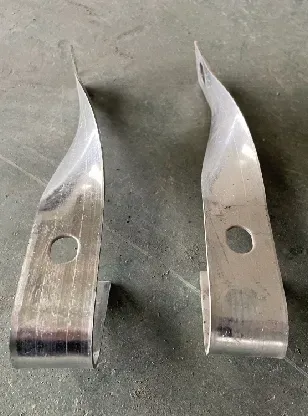loading...
- No. 9, Xingyuan South Street, Dongwaihuan Road, Zaoqiang County, Hengshui, Hebei, China
- admin@zjcomposites.com
- +86 15097380338
- Welcome to visit our website!
Fiber Reinforced Polymer Pressure Tank Benefits and Applications in Industrial and Commercial Sectors
The Role of FRP Pressure Tanks in Modern Engineering
Fiber Reinforced Polymer (FRP) pressure tanks have seen a surge in popularity across various industries due to their remarkable combination of strength, durability, and corrosion resistance. Unlike their metallic counterparts, FRP tanks offer a versatile solution that can be tailored to meet the specific demands of applications ranging from water treatment facilities to chemical processing plants.
The Role of FRP Pressure Tanks in Modern Engineering
One of the most significant advantages of FRP pressure tanks is their lightweight nature. This feature simplifies the installation process, reduces transportation costs, and makes them suitable for applications where weight is a critical factor. For instance, in offshore oil and gas platforms, where every kilogram matters, the lightweight profile of FRP tanks can provide substantial logistical and operational benefits.
frp pressure tank

The design flexibility offered by FRP is another notable benefit. These tanks can be manufactured in various shapes and sizes to fit the exact specifications required by an application. This customization extends to the incorporation of features such as baffles, compartments, and manways, which enhance the functionality of the tank. Moreover, advancements in manufacturing techniques, such as filament winding and resin transfer molding, have contributed to the production of high-quality FRP tanks with consistent performance characteristics.
Despite these advantages, it’s important to consider certain factors when choosing FRP pressure tanks. For one, the initial cost of an FRP tank can be higher than that of a traditional metal tank. However, the long-term savings on maintenance and replacement often offset this initial investment. Additionally, while FRP tanks boast excellent chemical resistance, they may not be suitable for applications involving highly concentrated acids or extreme temperatures unless specifically designed for such conditions. Therefore, it is crucial to conduct a thorough assessment of the operating environment and the materials to be stored before selecting an FRP tank.
In terms of environmental impact, FRP tanks are relatively eco-friendly compared to their metal counterparts. The manufacturing process for FRP is generally less energy-intensive, and the materials used are often recyclable. This aligns well with the growing emphasis on sustainability in industrial practices.
In conclusion, FRP pressure tanks represent a significant advancement in storage technology, delivering a combination of durability, flexibility, and resistance to environmental factors that is hard to match. While they may require a higher initial investment, their long-term benefits make them a wise choice for many industrial applications. As technology continues to evolve, we can expect FRP pressure tanks to play an even more integral role in various sectors, underlining the importance of innovative materials in modern engineering.
-
The Rise of FRP Profiles: Strong, Lightweight, and Built to LastNewsJul.14,2025
-
SMC Panel Tanks: A Modern Water Storage Solution for All EnvironmentsNewsJul.14,2025
-
GRP Grating: A Modern Solution for Safe and Durable Access SystemsNewsJul.14,2025
-
Galvanized Steel Water Tanks: Durable, Reliable, and Ready for UseNewsJul.14,2025
-
FRP Mini Mesh Grating: The Safer, Smarter Flooring SolutionNewsJul.14,2025
-
Exploring FRP Vessels: Durable Solutions for Modern Fluid HandlingNewsJul.14,2025
-
GRP Structures: The Future of Lightweight, High-Performance EngineeringNewsJun.20,2025
